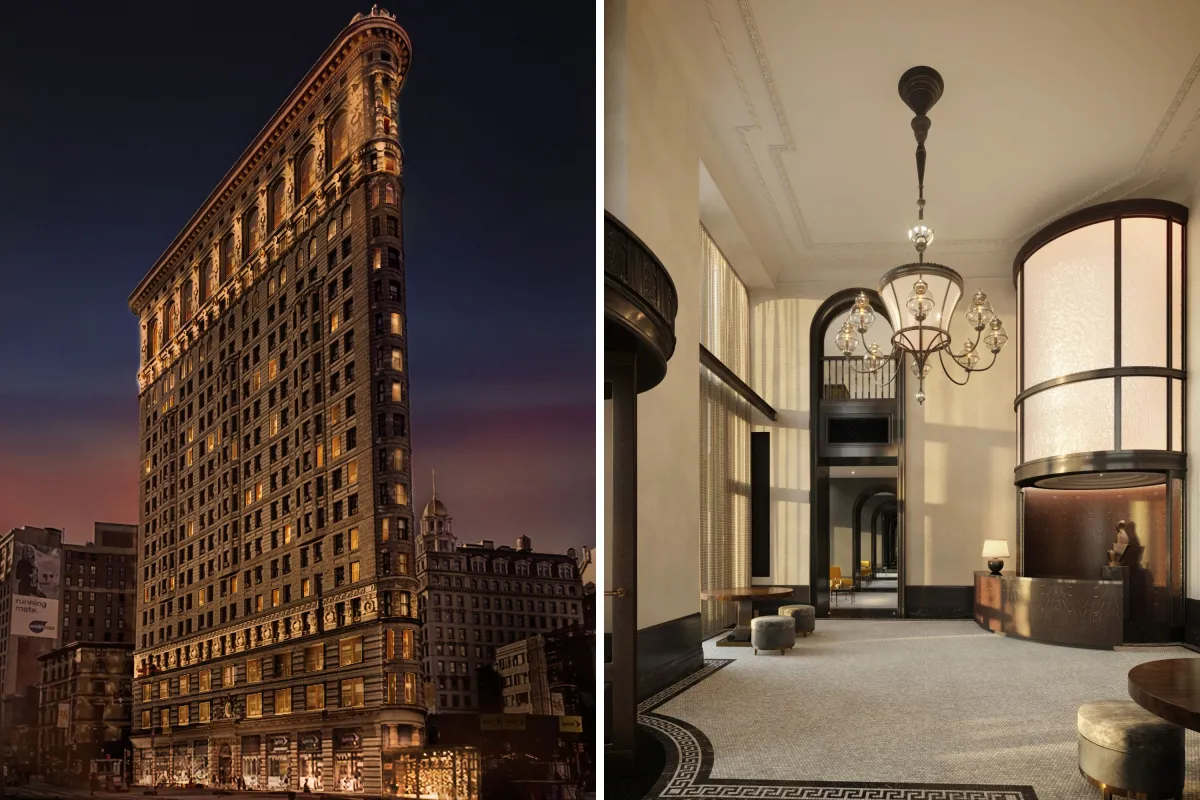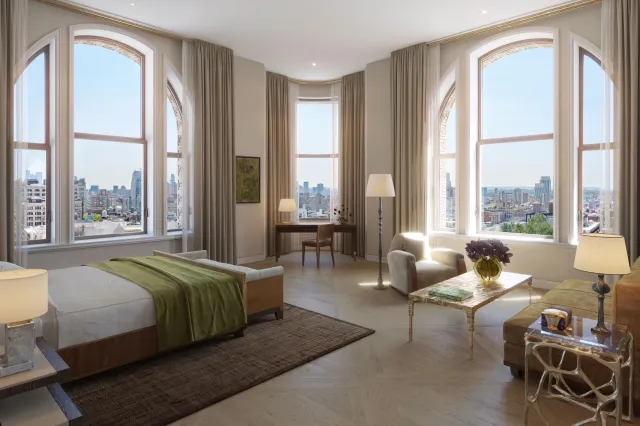
New York City’s iconic Flatiron Building, one of the world’s earliest skyscrapers and among the city’s most recognizable architectural landmarks, is entering an unprecedented new chapter.
The 307-foot-tall, 24-story tower, built in 1902, is being converted into private residences, a shift developers are calling a “transformation of historic proportions.”
The Brodsky Organization, working in partnership with The Sorgente Group, is leading the effort to restore and reimagine the triangular landmark for contemporary living. Sales for the building’s 38 homes are set to launch later this year, with three-bedroom residences beginning at $11 million.
“Three units are now in contract,” a spokesperson for the project told Newsweek, sharing new renderings of the building’s interior with Newsweek.
The homes will primarily feature three-, four-, and five-bedroom layouts in half-floor and full-floor configurations.
“Each residence will feature a unique layout, providing never-before-seen views across the New York City skyline,” the spokesperson told Newsweek.
Originally completed as the Fuller Building and designed by famed architect Daniel Burnham, the Flatiron Building immediately captivated the public with its Beaux-Arts façade, unique triangular form, and cutting-edge steel-frame construction. More than a century later, a preservation team is restoring the building’s exterior, working closely with the New York City Landmarks Preservation Commission.
The team is restoring the building’s exterior, which was originally designed to resemble a classical Greek column, with ornate decorative elements woven throughout its limestone, brick, and terra-cotta materials.

The multiyear preservation effort included a full survey of the limestone, brick, and terra-cotta façade. The team of experts replaced all of the more than 1,000 windows and restored thousands of individual terra-cotta pieces, each one recreated by a specialty California manufacturer and installed by hand. The building’s six-foot-tall cornice, which crowns the structure, was also comprehensively restored.
Inside, the Flatiron Building is being reimagined as a residential property by Studio Sofield, led by designer William Sofield, the firm’s founder and CEO.

Known for designing luxury retail spaces for brands such as Gucci, Tom Ford, Ralph Lauren, Bottega Veneta, Yves Saint Laurent, and Harry Winston, and homes for celebrities including fashion designers Tom Ford and Ralph Lauren, as well as Madonna, Kelly Ripa and Mark Consuelos, and Mary-Kate Olsen, Sofield is crafting each of the 38 residences, along with the building’s amenity spaces.
Studio Sofield’s design approach draws heavily from the building’s original architecture and historic materials uncovered during restoration. The interiors pay homage to original ironwork, marble mosaics, and historic railings, while integrating contemporary materials.
The project aims to honor the building’s past while shaping its next chapter, offering future residents a chance to live inside a piece of architectural history reimagined for the modern era.

Do you have an interior design or architecture-related story to share? Let us know via life@newsweek.com, and your story could be featured on Newsweek.
